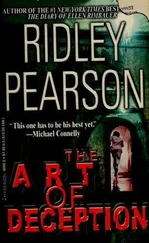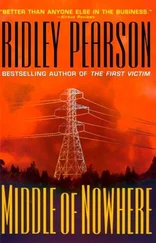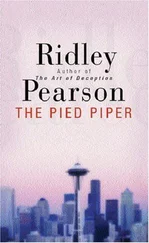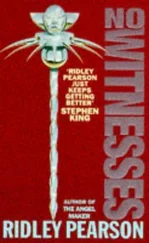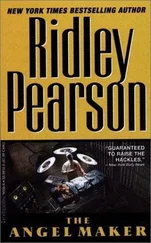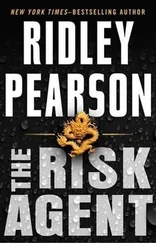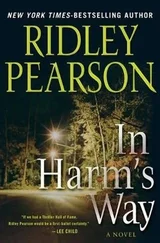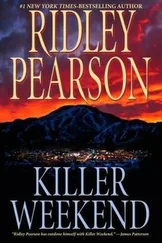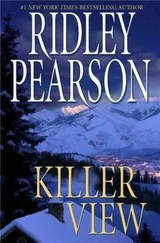“No heroics,” Knox speaks in French.
His hostage serves as his ally. The panic is diffused. Knox takes their cell phones, not wanting any emergency calls made. The men cooperate, surrendering their phones. The five lock themselves in the bathroom. Knox hides the phones in a drawer.
He’s not going to climb any more balconies. His nerves are electric with the events of the past few minutes, and he can’t afford a post-adrenaline slump.
He peers through the security peep. The webcam is a round piece of plastic mounted in the corner by the opposing door, aimed toward the stairwell.
The door will be locked, likely barred from the inside as well. He’s not going through it; they will have to open it for him. Too late for a pizza delivery. The idea of climbing the balconies resurfaces, but his patience is worn thin. His batteries overcharged, he wants to do this now.
He sees the ball cap hanging on a peg.
Opens the door, plasters himself to the wall and hurries across, hooking the cap over the camera. Rolls to his left, back to the wall, the shut door alongside.
If they’re asleep, if no one is watching the screen, he’ll need to start climbing. But if they’re awaiting confirmation the girls are gone, they don’t have it and nerves will be high.
He hears a man approach the other side of the apartment door. Likely eye to the peephole from where he won’t have a view of the dysfunctional camera. Knox waits for the sound of the lock turning, the door coming open.
Nothing. Too smart for that, Knox thinks.
He suffers a panic attack. He can hear Dulwich say, “Always beware of unintended consequences.”
He has scared the rabbit from the hole—and there’s no one watching the hole.
He crosses the landing back toward the mistaken apartment. A shot rings out and takes a chunk from the door in front of him. Mistake number 2: the man at the door had not left.
Knox dives and rolls into the apartment. One of his hostages has fled the bathroom in search of the phones and is hunched over, hands over his head. The man drops to the floor and crawls. Knox leaps over him and reaches the balcony door. They will escape by the front or back balconies, forcing Knox to choose, and he’s chosen the back because this is what he would do.
And there they are: two men, already lowering onto the second-floor balcony, two below Knox’s level, toward the middle of the structure. As one careens into a patio chair, he turns and takes a wild shot at Knox.
This is the starter’s pistol for Knox, the game changer. He doesn’t like being shot at. He turns and goes for the fireman’s act on the downspout to make up time. The downspout obliges by tearing loose from the wall and Knox goes down like a pole vaulter. It bends and then snaps, dropping him the final fifteen feet.
Two more shots ring out, but they’re chaff, meant as countermeasure, trying to force Knox to keep his head down. He braces his forearm in a prone posture and puts one of his four bullets into the man firing the weapon. He takes out a piece of the man’s buttocks, spinning him and causing a horrific scream. It’s a lucky shot at this distance; he’s not about to waste any of his remaining three.
The downed man is in a ball of pain and out of play.
Knox rises to his feet. The remaining man bursts through a hedgerow and vanishes. Knox leaps through the line of shrubs, ducking and rolling in case his opponent has used it to set him up. The move costs Knox by taking him off his feet. The man had no intention of pausing to shoot; he’s making for the line of parked cars.
He’s too far away for Knox to get off any kind of accurate shot. At which point Knox realizes his gun feels light. One touch confirms he’s lost its magazine. The handle stock is crammed with dirt. He has one round in the chamber, if that.
The car starts, its headlights switching on automatically. It rams the vehicle behind it as the driver cuts the wheel to escape the parking space. Knox is going to lose him.
The car’s engine whines as it overraces. The tires shriek. Knox runs for the lane. Vaults a row of large rocks that create a boundary between the parked cars and lawn.
The car speeds toward him. Twenty meters . . . Fifteen . . . He aims the handgun, but it fails to fire. He drops it and reaches down. Takes hold of the nearest rock—the thing is massive—and hits it, dislodging it. He kneels, wraps his arms around and maneuvers it out of the stubborn earth. His muscles tearing, his chest and head exploding, he pins it to his chest, turns and gets one knee up.
Ten . . .
Then his second knee. He squats like an Olympic weight lifter. Shuffles his feet forward a matter of inches.
Five meters . . .
Grunts as he struggles to stand. Feels something pop in his gut. Heaves the rock. It travels about two feet, no more. Takes out the front bumper and right headlight, but has the desired effect: the airbags deploy. The driver is slammed back in his seat, like a fist to the face. The car plows into the rear end of a puke orange hatchback, and rebounds back into the lane.
Knox throws open the passenger door, grabs Fahiz—it is Fahiz!—by the arm and pulls him across the front seat like a toy. Elbows him in the jaw. Hears a crack. Places the stunned man’s right arm against the dash, rotates the shoulder out of its socket and delivers a blow to the reversed elbow, dislocating it.
Hears a shot. Takes cover behind the car. Comes around behind the wheel and the collapsed airbag and floors it. Both car doors shut from the forward velocity. A bullet cleanly pierces the rear side window.
Fahiz—Polat—looks like a mannequin dropped from a third-floor window. But the guy is not going down easily. He tucks his knees, swivels and kicks Knox into a different time zone, pressing him into the driver’s door.
The car drifts through a corner. Fahiz kicks the steering wheel. The car crosses the lane and bounces off a retaining rail. Two more vicious kicks beat Knox’s head into the driver’s-door window. The gun is lost. Fahiz straightens his arm, grabs the wheel and throws himself backward, pulling his dislocated arm out far enough to reset it into the socket. He screams. Regains enough use of the arm to throw a punch, connecting with Knox’s temple. Fahiz screams again, but a curl of a smile takes to his wounded face.
“About time,” Fahiz says.
His left arm raises. But the elbow is dislocated so that the forearm flaps with Knox’s gun roughly aimed at Knox.
Knox shoulders the gun out of the way, gropes between the seats. Fahiz slaps away his efforts. The car scrapes along a row of parked cars and Knox manages to keep it on the road. The gun discharges. Knox is instantly deaf.
His fingers search blindly between the seats, with Fahiz pounding and slapping away his efforts.
But Knox wins: he yanks the parking brake. Fahiz and the weapon are thrown forward against the dash. The car slides through an intersection and is T-boned on Knox’s side by a slow-moving tram. The vehicle is pushed down the street, spins and is dumped into oncoming traffic.
Knox punches Fahiz in the previously dislocated shoulder. He then takes hold of the man’s left forearm and reverses it like it belongs to a gummy bear. Fahiz opens his mouth to cry out, but there’s no sound. The man is past pain. His eyes roll in his head. He waves the gun at the end of his rubbery arm up to head height—Knox sees the barrel’s dark hole out of the side of his eye.
Fahiz pulls the trigger. Click. Empty.
Fahiz is all whites where his eyes should be. He slumps.

Читать дальше


